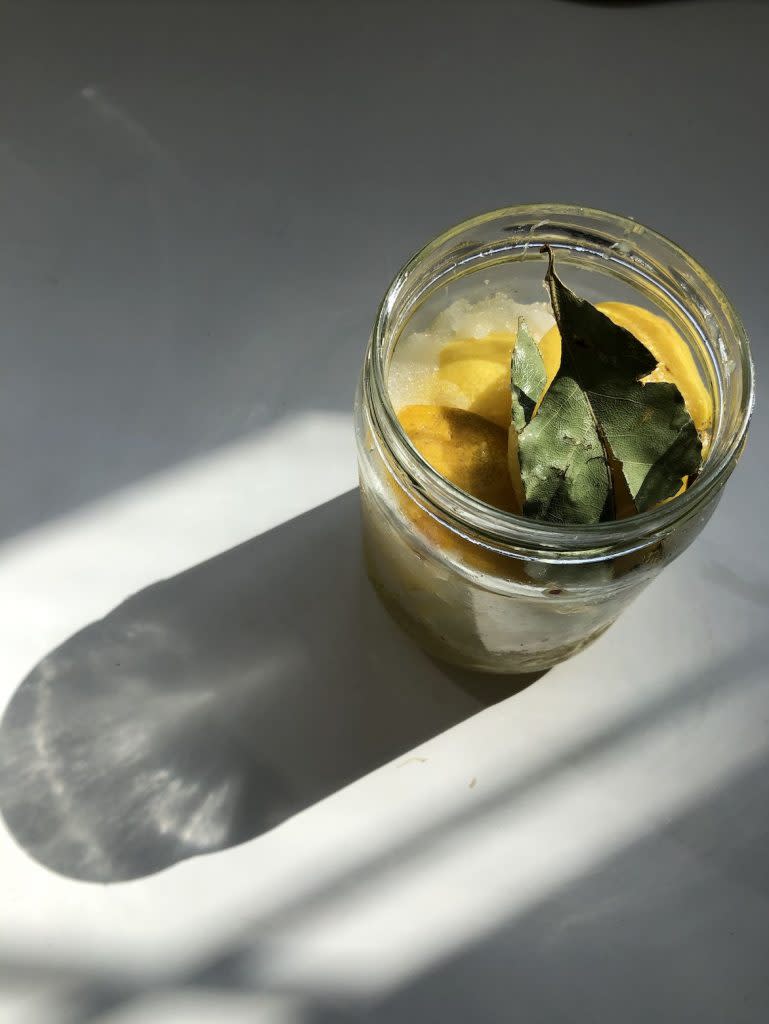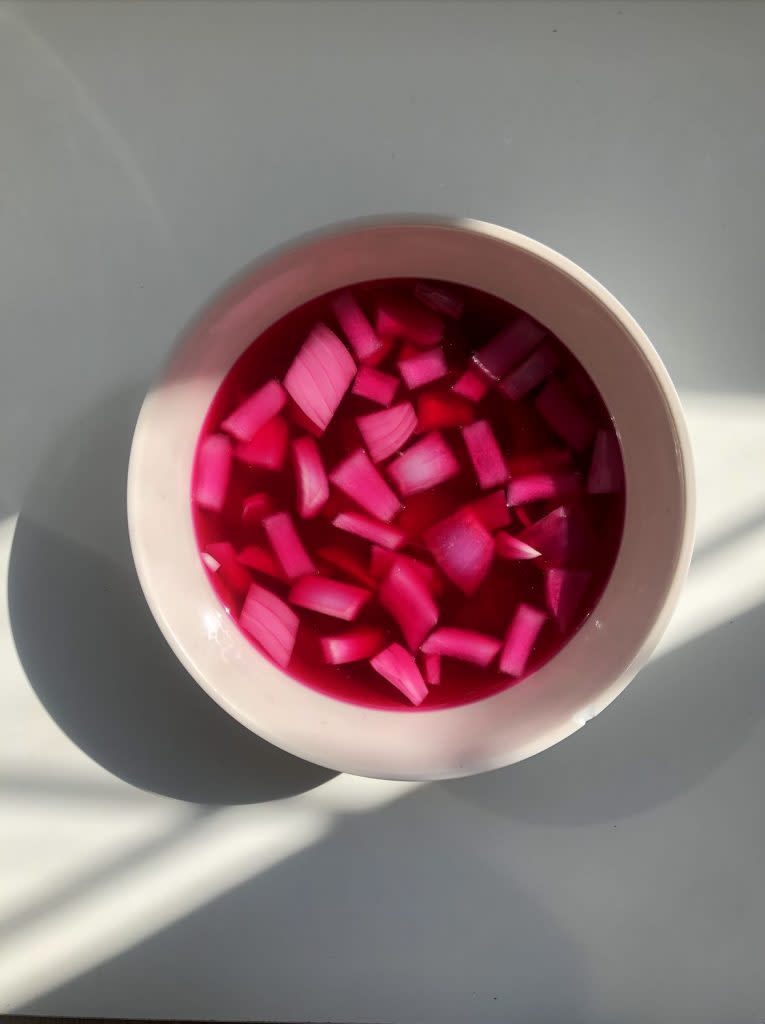Saving the season: My 2 personal favorite techniques for preserving seasonal foods

Our team is dedicated to finding and telling you more about the products and deals we love. If you love them too and decide to purchase through the links below, we may receive a commission. Pricing and availability are subject to change.
Adriana Urbina is an In The Know cooking contributor. Follow her on Instagram and visit her website for more.
If you want to enjoy market produce all year round, preserving food at home can be a healthy and cost efficient option. By learning how to safely preserve foods at home, you can contribute to having a kitchen with less food waste and, at the same time, create last-minute meals by shuffling through your pantry or freezer.
So many different preservation techniques exist from cool temperature storage, food drying, and freezing, to fermentation, alcohol, freeze-drying and preserving in salt and sugar. Today I’m sharing two of my personal favorite approaches, so you can enjoy the bounty of summer deep into the winter season with delicious canned and pickled foods.
Canning

Canning is perfect for your harvested fruit and veggies. It allows you to store your harvested produce longer. Before you start canning food, you must first prepare the mason jars that you will be using for your produce. Also, make sure all your canning equipment is ready before you get started.
The process involves placing foods in canning jars and heating them to a high temperature to destroy the microorganisms that cause food to spoil. During the heating process, air is pushed out of the jar, and as the cans cool, a vacuum seal forms. Canning in a bath of boiling water is ideal for high-acid foods, like fruits and fruit juice, pickled vegetables, salsa, chutneys, vinegars and condiments. Water bath canning requires extended cooking time at a low temperature to destroy the mold, yeast and enzymes that cause spoilage, while making a vacuum seal for long-term storage.
Ingredients:
2 pounds figs
¼ cup unrefined whole cane sugar
Juice from ½ lemon
Zest of 1 lemon
Dash of cinnamon
Pinch of salt
Note: You can use this base recipe for different fruits, like green and red apples, pumpkin, pears, cherries and berries.
Directions:
1. Cut the figs into quarters.
2. Place them in a pan with your sugar. I used an unrefined whole cane sugar, but you can use whatever sugar you have on hand.
3. Cook over low heat while stirring the fig and sugar mixture. I decided to make a purée with the figs, using a handheld blender, but this isn’t necessary. They tend to break down quite a bit (even if you skip using the blender), but you may end up with more of a chutney texture.
4. As you heat your mixture, you will notice that the color will darken, and the mixture will thicken and get smoother. Continue heating and stirring until the fig mixture starts to separate from the sides of the pan. When you reach that point, if you use your spatula to clear off a small area at the bottom of your pan, the jam should be thick enough that it doesn’t cover the cleared area again.
5. Add in your lemon juice and cinnamon to taste. Pour your fig jam into small jars for storing. Allow it to cool, and then refrigerate. Serve and enjoy!
Vinegar Pickling

Vinegar pickling creates a high acid environment that kills off microbes and causes food to change in flavor and texture. Vinegar, salt and sugar are heated and added to fruit or vegetables to make pickled peppers, onions, apples, beets, carrots, onions, cauliflower, green beans, plums, etc. You can adapt this simple formula for any fresh vegetables — try a mixture of vinegars and spices for a truly custom pickle pleasure!
Instructions:
1 pound fresh vegetables, such as cucumbers, carrots, green beans, summer squash or cherry tomatoes
2 sprigs fresh herbs, such as thyme, dill or rosemary (optional)
1 to 2 teaspoons whole spices, such as black peppercorns, coriander or mustard seeds (optional)
1 cup vinegar, such as white, apple cider or rice
1 cup water
1 tablespoon kosher salt or 2 teaspoons pickling salt
1 tablespoon granulated sugar (optional)
Note: You can use this base recipe for different vegetables.
Directions:
1. Prepare the jars. Wash two wide mouth pint jars, lids and rings in warm, soapy water and rinse well. Set aside to dry, or dry completely by hand.
2. Prepare the vegetables. Cut them and wash them.
3. Add the vegetables. Pack the vegetables into the jars, making sure there is 1/2 inch of space from the rim of the jar to the tops of the vegetables. Pack them in as tightly as you can without smashing.
4. For the brine: Place the vinegar, water, salt and sugar (if using) in a small saucepan over high heat. Bring to a boil, stirring to dissolve the salt and sugar. Pour the brine over the vegetables, filling each jar to within 1/2 inch of the top. You might not use all the brine.
5. Remove air bubbles. Gently tap the jars against the counter a few times to remove all the air bubbles. Top off with more brine if necessary.
6. Seal the jars. Place the lids on the jars and screw on the rings until tight.
7. Cool and refrigerate. Let the jars cool to room temperature. Store the pickles in the refrigerator. The pickles will improve with flavor as they age — try to wait at least 48 hours before cracking them open.
If you enjoyed this article, check out the 13 things nobody tells you about organizing your pantry!
More from In The Know:
The sweater vest is the easiest style trend of the season — shop 5 cute options for under $30
3 pairs of editor-approved denim jeans at every price point
5 cute and cozy short puffer jackets that’ll keep you warm all winter
These under-$10 biker shorts have over 18,000 ratings on Amazon: ‘Best ones I’ve found’
The post Saving the season: My 2 personal favorite techniques for preserving seasonal foods appeared first on In The Know.

 Yahoo Finance
Yahoo Finance 